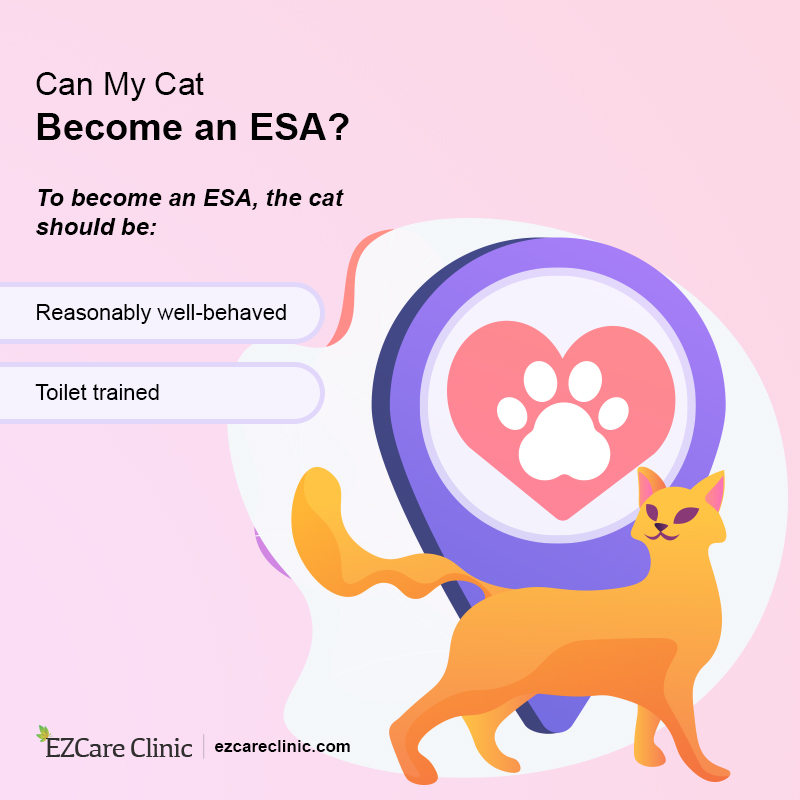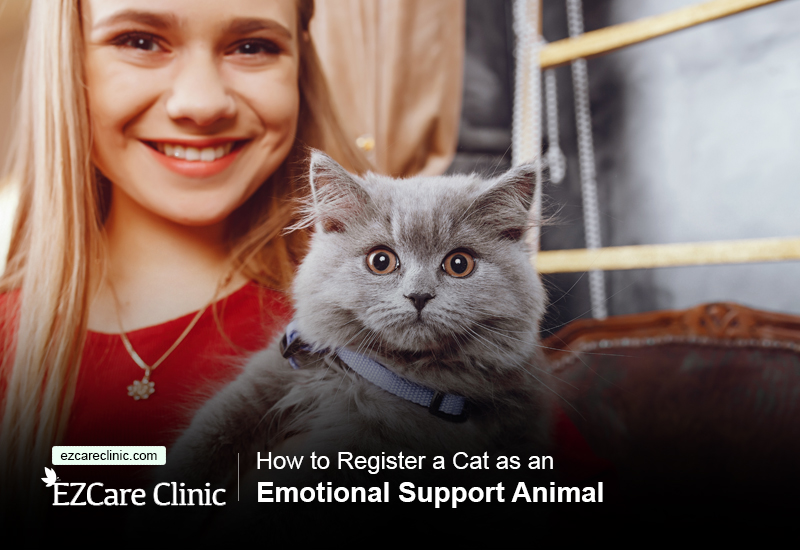Mental health disorders that substantially interferes with or limits one or more major life activities affect approximately 1 in 25 adults in the US in a given year. These individuals are more likely to have chronic medical conditions causing them to die an average 25 years earlier than others primarily due to treatable medical conditions. In addition to natural causes, suicide is the 10th leading cause of death in the US and the 2nd among people aged 10-34. These staggering numbers are enough to cause most individuals to question what can be done to help this group of people.
Get your authentic ESA letter from a licensed physician by clicking the button below!
While many might rightly say that an increase in public awareness and early intervention methods are the key to treatment, others may argue that medication and therapy are not magic cures either. While the debate rages on, another alternative treatment has shown a lot of promise as well.
1. What is an Emotional Support Animal (ESA)?
Individuals who have debilitating mental health or emotional disorders can benefit from the assistance of a companion. Emotional Support Animals (ESAs) can be used to help alleviate the symptoms of these disorders by providing comfort, security, companionship, and love without passing any judgment on the individual. Typically, emotional support animals are dogs, but it is not uncommon to see cats and even other animals that offer the same benefits. To legally qualify as an ESA, the individual must have a prescription from a licensed mental health professional stating that the animal is needed for the health of the patient.
Most people are familiar with service animals for individuals who have physical or psychiatric disabilities. Service animals can only be dogs and sometimes horses, but ESAs can be any animal. Unfortunately, emotional support animals are not covered under the

Cat as an ESA
2. Can a cat qualify to become an emotional support animal?
Emotional support animals can be any commonly domesticated animal including dogs, cats, or even ferrets. To qualify as an ESA the animal must be reasonably well behaved, and toilet trained. Animals that are a nuisance or a danger to others do not meet the requirements. Under these guidelines, cats can be used as an emotional support animal.
Get your authentic ESA letter from a licensed physician by clicking the button below!
3. How to travel with your ESA cat?
Traveling with an emotional support animal can be relatively easy if you are providing transportation yourself. However, individuals are required to treat the ESA as if they are pets and only book hotel rooms with those that are pet-friendly and admittance to public places are not guaranteed. Traveling by bus or train can be slightly trickier but not impossible. Individual requests that include the qualifications for travel should be made to each carrier before purchasing a ticket.
Air travel is more restrictive and advanced notice is required at least 48 hours prior to your trip.
Under the new guidelines, individuals traveling with ESAs must only have one animal per person and those other than cats or dogs are prohibited from flying in the cabin. The support animal must be able to fit at the traveler’s feet, under the seat or in their lap. Animals that have a kennel must fit under the seat in front of the passenger with the animal inside. Support animals cannot be seated in an exit row or occupy a seat.
If animals do not meet the enhanced guidelines, passengers may be asked to transport the animal as a checked pet, require an additional ticket or the passenger and ESA may be asked to rebook the flight with more open seats.
Emotional support animals are also required to adhere to certain behavior standards. Any form of disruptive behavior that can’t be successfully corrected or controlled such as growling, biting or attempting to bite, and jumping or lunging at people are strictly forbidden. Unruly behavior that is observed at any point during the journey that violates this rule will result in the animal being considered a pet, and all charges as such will be applied.
4. How much does a cat cost?
Although cats are often less expensive than dogs, there are costs to consider. Food, litter, toys/treats, pet health insurance, and medical treatment can impact the bottom line of ownership. The following is an estimate of costs each year for owning a cat.

Cat expenses
- Food – $145
- Litter – $200
- Pet Health Insurance – $175
- Annual medical exams – $130
- Miscellaneous expenses -$30
- One-time expenses (litter box, carrying crate, spay/neuter etc.) – $365
According to most estimates, the total first-year costs of cat ownership can exceed $1000.00 and every year after that is estimated to cost between $600 and $700, but this number can increase if there are unexpected illnesses or injuries.
Get rid of all mental disabilities by clicking the button below!
ESA letter for my cat from EZCare Clinic
Emotional support animals are an effective way to help individuals who have mental disabilities such as anxiety or depression. They offer therapeutic help, yet they require no specialized training like service animals might. Although some people do not understand the value of these animals, individuals who rely on them for comfort and love will attest to their benefits.
Individuals who believe that an emotional support animal could help them should speak with a mental health professional before obtaining any animal. While
Visit EzCare Clinic locations in-person or speak with a licensed doctor via telehealth today. For your convenience our doctors are seeing patients 7 days a week from 11 am to 7pm. You can get your emotional support cat letter today by filling out this very simple health questionnaire – ESA letter application.
Sources
- The Americans with Disabilities Act (ADA) protects people with disabilities from discrimination.
Source link - Air Carrier Access Act
Source link - The power of support from companion animals for people living with mental health problems: a systematic review and narrative synthesis of the evidence. (2018)
Source link





